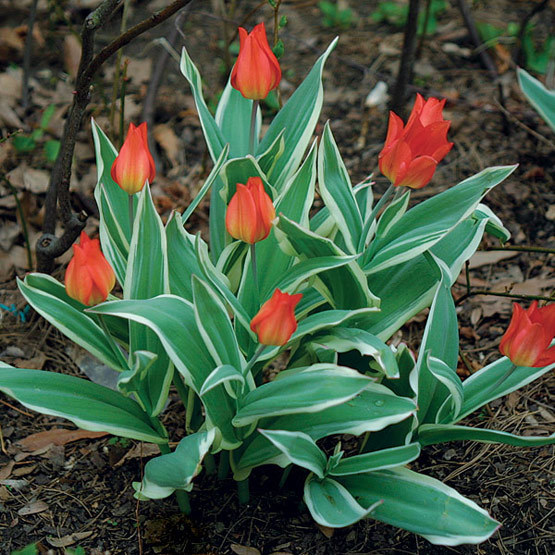
Tulips originate in regions with cold winters and dry summers. (They require a cold treatment in order to bloom.) They are invaluable for early spring color in bedding schemes, parterres, cottage gardens, and mixed borders. Smaller species are suitable for rock gardens. Many only last and bloom reliably for one season (best treated as annuals, or lifted six weeks after blooming, dried, with only the largest bulbs replanted), but some of the species will naturalize. Many are suitable for forcing. Tulips are grouped into 15 divisions: Single Early, Double Early, Triumph, Darwin Hybrid, Single Late, Lily-Flowered, Fringed, Viridiflora, Rembrandt, Parrot, Double Late, Daufmanniana, Fosteriana, Greigii, and Miscellaneous.
Noteworthy CharacteristicsThese beloved bulbs offer a definite sign that winter is history and spring is here to stay. Their vessel-like blooms take many forms—single, double, peony, fringed, and lily—and are offered in every color of the rainbow. Their diversity is enhanced by the varied patterning of colors; they can be margined, flamed from the base, striped, or chameleon.
CareGrow in fertile, well-drained soil in full or afternoon sun. Plant to a depth of two and a half times the height of the bulb. In regions warmer than Zone 8, bulbs will need a cold treatment (40° to 45°F for 8 to 10 weeks).
PropagationSow seed of species in a cold frame or cold greenhouse in the fall. Divide offshoots in summer and replant.
ProblemsBulb and root rot, gray mold, slugs, snails, aphids, nematodes, voles


























